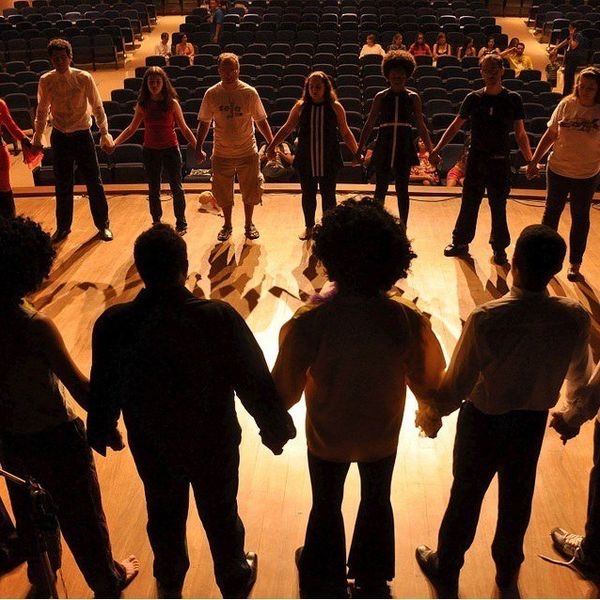Throughout my entire high school career, I was strictly involved with the performance aspect of theater. The only "backstage" effort I contributed was an occasional set building work day.
After completing my first semester of college and finally deciding a major, I definitely felt more open to trying new things; this included working backstage for a few one-act plays during my second semester.
Though I performed the show working on the sound board, I was a part of run crew for the first couple of dress rehearsals.
There's the theory that every group in a theatrical show works together to make the show work or pull through. The show would not go on if there were no actors, but the show also could not go on if there were no stage manager, choreographer, etc. This theory - though it seems reasonable - is false.
A theatrical performance would not be successful without its run crew. Period.
For those who are unaware of theater positions and jargon, run crew is "a collective term used in theater to describe the members of the technical crew who supervise and operate ('run') the various technical aspects of the production during a performance." In layman's terms, run crew are the people dressed in black that move set pieces or props in a performance.
Sometimes sets are plain and include a singular stool or a chair with a lamp. Sometimes sets can include every single freaking object ever known to man. No matter what is on the set, it is of vital importance that every single object be placed in a very specific location on stage. If done incorrectly, the show could literally be ruined.
As a result of working run crew for a few nights, I not only gained experience for going outside of my comfort zone, but I also gained a newfound respect for all the work that goes on behind the scenes. Mainly for run crew, but you get the idea.
Run crew is the backbone of theatrical performances, and I genuinely appreciate every set change they have ever done for myself, as a performer, and for any other performer(s).





















